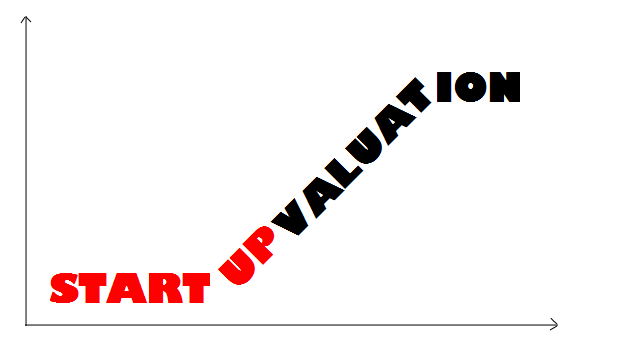
7 Deadly Sins of Startups From A Valuation Perspective
With unemployment high and good job opportunities scarce, many displaced workers are taking the entrepreneurial route and starting their own businesses. They are hoping their skills from years of employment, often at large companies, will translate into successful small business ownership. Many are purchasing franchises or existing businesses, while others are using their own ideas or hobbies to start their own unique businesses. As a result, Small Business Administration (SBA) guaranteed loan applications have soared and ROBS (Rollovers as Business Startups) plans that enable workers to rollover funds from 401k retirement plans to purchase or start a business without adverse tax consequences, have flourished. The valuation analysis required by both these funding mechanisms has revealed common flaws in these new businesses. As a result of our active participation in the valuation of businesses for these purposes, we have identified seven common “sins” of business startups from a valuation perspective. For a perspective more oriented toward what venture capitalists and high-end “angel investors” focus on, see 11 Things Venture Capitalists Look For.
1. The First Deadly Sin—No Financial Projections
The value of most businesses is the sum of the present value of the cash flows expected to be generated in the future. Amazingly, many entrepreneurs and new business owners are unable to provide a set of financial projections or budgets and the underlying assumptions. Many believe that growth of the business will just happen and that they will react to that growth by paying the bills, making purchases, etc. The most successful small business owners prepare, in advance, a forecasted income statement (or budget) and balance sheet that detail: expected revenue growth over the next three to five years, cost of goods sold, fixed costs or overhead, profitability, and how this translates into cash flow, the need for additional asset purchases, etc. The financial projections may show, for example, that the business will not reach break-even in the first year and that the business will incur financial losses that will use cash on hand or require additional cash infusions to continue operations and pay the bills. The financial projections may also reveal that the company is unable to service any debt or generate sufficient cash flow to enable the owner to take a salary. All of these are significant problems that a relatively simple set of financial projections should reveal to the new business owner.
On the flip side, many startup business owners do create a set of financial projections, but they are based on underlying assumptions that are unrealistic. For example, some startups may be expected to experience rapid growth in the first few years; however, there is a limit to that growth and the ability of the business to sustain that growth. With growth of a startup come certain expenses that should be anticipated, such as the need for additional staffing, supplies, purchases of raw materials, etc. Failure to plan and anticipate this can lead to cash flow problems. Cash is king for any business. Lack of cash or lack of access to funds to support operations can quickly lead to bankruptcy and closure of the business.
From a valuation perspective, the lack of financial projections, or providing unrealistic financial projections without supporting assumptions, suggests to the business appraiser that the entrepreneur is “wet behind the ears” or fails to understand the implications and necessity of financial planning. Typically, this has a negative effect on the likelihood of success and therefore, on the current and projected value of the business.
2. The Second Deadly Sin—No Formal Business Plan
Along the lines of the first deadly sin, the lack of a formal business plan is also common among small businesses and startups. New entrepreneurs often mistakenly believe that opening a business and putting a sign outside is enough. It is usually the business plan that segregates viable businesses from an entrepreneur’s hobby that they hope to make into a business. In some cases the hobby may be a viable business. Successful entrepreneurs create a thoughtful and realistic business plan prior to opening the business to determine if the business is feasible both financially and operationally. The business plan includes aspects such as how the business is going to market itself and generate revenues, its target market, operational plans such as staffing requirements, supplier analysis, capital budgeting or expectations regarding the need for fixed assets to start the business or maintain operations and meet growth demands, etc. The business plan is the roadmap for the entrepreneur, telling where they are going, how they are going to get there, and what resources they need to get there. A business plan that is well thought out and researched does not necessarily have to be a one hundred page document, but it should be sufficiently long to provide insight into the expected operations and “path” of the business.
The lack of a formal business plan in the valuation process once again suggests that the entrepreneur may not understand the importance of planning for various aspects of the business. Just as the absence of a business plan bodes poorly for the value of the business, an unrealistic or haphazardly prepared business plan also instills little confidence in the business appraiser with regards to the entrepreneur’s ability to be successful. A similar statement can be made about the likely confidence level of prospective investors.
3. The Third Deadly Sin—No Break-even Analysis
A key part of the financial projections and business plan is for the entrepreneur to conduct a break-even analysis. The traditional break-even analysis reveals what level of sales a business must achieve to cover both the variable costs (cost of goods sold) and the fixed costs (overhead), resulting in $0 profitability. Beyond the break-even point, the business should be generating profits. Until the company reaches its break-even point, the business must have adequate financial resources to pay the bills and fund ongoing operations. Conducting a break-even analysis should enable the entrepreneur to test the reasonability of the business plan and financial projections. For example, if the business needs to produce and sell 5,000 widgets per month to reach break-even but the capacity is only 4,000 widgets per month, the entrepreneur has a significant problem and will either need to cut costs to lower the break-even point or increase capacity to produce more products. In addition to traditional break-even analysis, an entrepreneur may conduct a cash flow break-even, which shows how much must be sold for the business to begin generating positive cash flow.
A business appraiser will often consider the startup’s break-even point in the analysis of future returns and risk. The break-even analysis can make the difference between the business having a value of $0, implying the business won’t survive, and a positive value and future prospects.
4. The Fourth Deadly Sin—Operating On Shoestring Budget/No Working Capital
Too often, entrepreneurs believe the business will quickly generate enough cashflow to sustain operations and, thus, enter into the new business with insufficient financial resources. They may try to operate on a shoestring budget until the business reaches cashflow break-even out of necessity due to a lack of access to additional financial resources. This may involve getting behind on paying bills, which could hurt the business’s credit and relationships with suppliers and vendors. Obviously, in the absence of access to additional funding sources or lines of credit, the lack of cash also can quickly result in the closure of a business. Unexpected or unanticipated expenses can quickly lead to financial problems and growth constraints for shoestring operations. For example, the need for an additional employee to accommodate demand, but not having the funds to hire, can constrict the business’s growth and profitability.
But just as important, business growth changes a business’s working capital. For example, more sales create more accounts receivable and accounts payable. The payables can’t be paid until the receivables are converted to cash without using other cash resources. This lag can create cash flow problems for any business, particularly a startup whose financial resources often are more limited. Adequate business planning and financial analysis at the outset can help identify potential working capital needs at various critical points in the company’s growth, enabling the entrepreneur to make arrangements for lines of credit, additional capital, etc.
From a valuation perspective, businesses that operate on a shoestring budget have high operating risk, which tends to increase overall risk and lower overall value. In addition, inadequate working capital or lack of planning for working capital needs tends to increase the financial risk profile of a business and lower the value as well.
5. The Fifth Deadly Sin—Lack of Startup Managerial Experience
While many startup entrepreneurs have experience in a corporate setting, few have had experience actually running an entire operation on their own. In a corporate setting, there are already established relationships, financial resources, and managerial depth across other key functional areas of the business. Usually, in a corporate setting, the functional areas are also managed by different people. For example, human resources handles hiring and staffing issues, accounting handles the financial aspects and bill paying, the marketing department handles the marketing, and so on. The entrepreneur who has come from the corporate world has likely been predominantly working in their own functional area with their unique and specialized responsibilities (except in some instances when they have been a high-level executive with full P&L responsibility). In the entrepreneurial setting, however, they typically must wear several different hats, handling and overseeing sales staff, the accounting function, marketing, etc. Those entrepreneurs who do not have significant cross-functional experience are often starting their business at a disadvantage, which may be evident in the lack of a business plan, financial projections, and other factors as previously discussed. While startup ventures often require the entrepreneur to be the “chief cook and bottle washer,” no one can do it all; in most cases, it cannot be a one man show (with the exception being some professional services). The most successful entrepreneurs have a solid understanding of all functional areas, but also surround themselves with other individuals who may have more experience in particular key aspects of business operations. For example, a restaurant owner who is also a chef may have a mastery of back of the house operations but limited experience with front of the house operations, necessitating an individual with a skill set to fill that gap.
The business appraiser will typically consider the entrepreneur’s experience or lack thereof in valuing the business. Individuals with little or no experience are usually considered much more risky than individuals with extensive business backgrounds, particularly if their experience is in the same industry of the new startup. A higher entrepreneurial risk profile stemming from lack of experience will likely result in a lower value for the business. While it is not always the case, a more extensive background and level of experience may tend to reduce the risk profile of the startup and increase the value, all else being equal.
6. The Sixth Deadly Sin—Unrealistic Growth Expectations
Planning for too little growth and trying to play catch up when growth exceeds expectations creates a number of challenges, such as the need to expand operations and capacity and the resulting requirement for capital expenditures and potentially, additional financial resources. However, planning for too much growth is just as bad, if not worse, in that overinvestment in equipment and materials reduces asset efficiency and return. As mentioned before, some startup businesses are likely to experience extremely rapid growth in the first few years of operations. However, the growth of a startup is not limitless and is bound by, among other factors, the business’s capacity to produce its goods and services. It is easy for an entrepreneur to exhibit “irrational exuberance” when it comes to growth. In creating growth expectations, the entrepreneur should first consider the maximum potential output of its goods or services based on available equipment, human capital, etc. Growth over and beyond that level will require additional capital investment, as well as more financial and human resources. In forecasting growth, the entrepreneur should, of course, also take a close look at the potential demand for its goods and services by considering the markets being served, the competition, and the potential market share that the company may gain given the size, scope, and competitive landscape.
Unrealistic growth expectations typically are easily spotted. For example, a maker of gourmet marinades has initially good growth potential. However, its facility can only produce enough cases annually to equal a 1% total market share. Based on the competitive landscape, the company would need significant investment in advertising to build brand awareness in order to potentially increase its market share to 5%. However, the revenue expectations as expressed in the company’s financial projections suggest production in the second year that is beyond the facility’s capacity and the financial projections do not account for additional capital expenditures or advertising campaigns. Fixed costs grow by only 2% in the financial projections, yet by the fifth year, revenues for the company imply a market share of over 15%!
Based on these inconsistencies, the growth expectations obviously are “pie in the sky”. The business appraiser will likely notice this glaring error, which tends to undermine the integrity of the financial projections as well as the credibility of the entrepreneur. As a result, the value is likely to be negatively impacted.
7. The Seventh Deadly Sin—No Risk/Return Analysis
One of the most difficult considerations for an entrepreneur is the risk/return analysis of the potential business venture. An incomplete or poorly-reasoned risk/return analysis on the part of the entrepreneur may lead a savvy financial investor to turn down a potential investment in the business in favor of an apparently less risky opportunity.
Even in a world with the global financial system and markets turned upside down, there is a relatively clear relationship between risk and return. An investor in a higher risk investment should be compensated with a higher return. For example, an investor in a risk free asset such as US Treasury bonds would expect a return of roughly 4%. An investor in a publicly-traded, blue chip company (a utility company, for example) may expect a dividend yield of 5-6%. Corporate bonds have returns of 5% and higher. A well diversified investment portfolio may have a return in the 6-12% range. “Junk bonds” have returns of 12% or higher. Venture capitalists expect annual compounded returns anywhere from 30% and up for “risky” equity investments in startup ventures. Entrepreneurs should recognize that owning their own business involves significant risks. As such, any investor (whether it is themselves or a financial buyer under the fair market value standard in business valuation) would expect a return significantly higher than that on Treasury bonds, a diversified portfolio of publicly-traded stocks, etc.
For example, suppose an entrepreneur invests $500,000 of his or her own money into their business. For the first two years, they expect losses which they finance with external debt. After three years, they are projecting a net cash flow to equity of $20,000, representing actual cash available for distribution as a dividend at year end. The return in this case is only 4%, which is hardly enough to compensate for the level of risk. A financial investor would likely opt for any one of a number of other potential investments that offer a higher projected return for an apparently lower level of risk. For the entrepreneur, however, the investment in the business only makes sense if they factor in their $20,000 net cash flow along with their projected salary and benefits of $50,000, for a total return of $70,000 or 14%, in year three. The financial investor will receive no salary, so the return calculation is not as attractive for them.
Many entrepreneurs are new to the business world and are overwhelmed with emotions that may tend to cloud their investment decisions. The most successful entrepreneurs are those who proactively address the seven deadly “valuation sins” of business startups prior to starting operations. Business owners who are reactive in dealing with these “sins” generally find themselves at a disadvantage, which can often lead to failure. Entrepreneurs should seek to maximize the value of their business. To do so, they must address these seven deadly sins or be prepared to face the negative valuation ramifications.
This article was written by Robert M. Clinger III and Paul Morin. For more information on Robert M. Clinger III and Highland Global (HG), see www.HighlandGlobal.com. For more information on Paul Morin, see HG and www.CompanyFounder.com/about.
Please leave your comments and questions below or in the top right corner of this post.
.




Excellent work, Paul! All very criticial points and extremely practical and useful advice, thanks!
Thanks, Arturo. I’m glad you found it helpful!